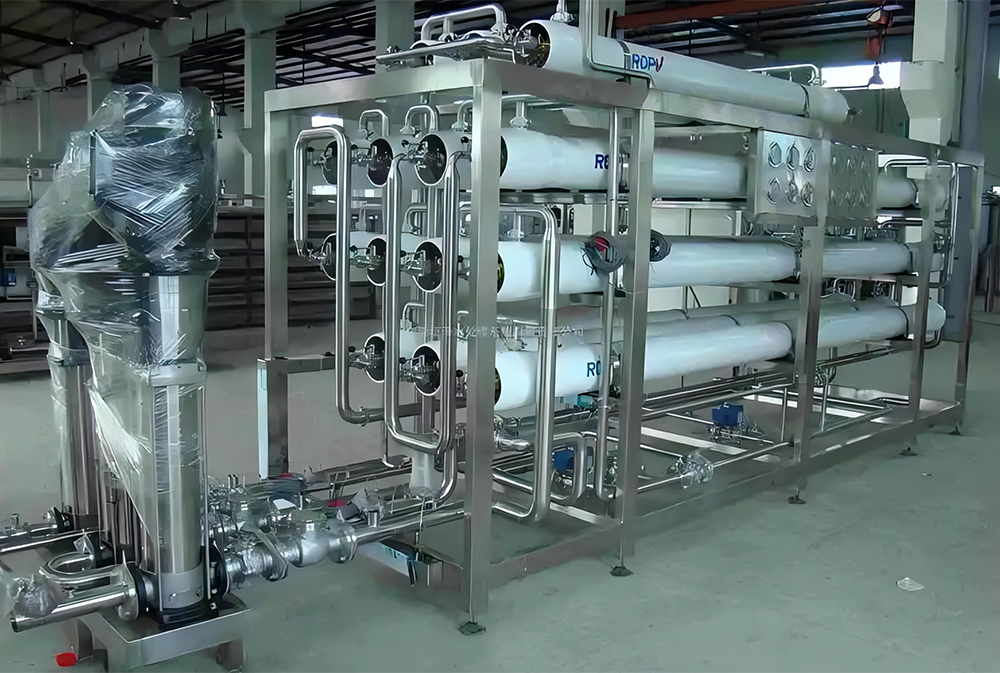water device Disease Prevention: Waste water systems remove harmful pathogens, bacteria, and viruses from sewage, reducing the risk of waterborne diseases such as cholera, typhoid, and dysentery clean water system.
water device Safe Water Supply: By treating waste water, these Waste water systems prevent contamination of drinking water sources, ensuring safe water for communities clean water system.
water device Water Quality Improvement: Waste water treatment removes pollutants, chemicals, and nutrients (e.g., nitrogen and phosphorus) that can harm aquatic ecosystems Waste water.
water device Ecosystem Preservation: Cleaner Waste water supports healthier aquatic life, including fish, plants, and other organisms clean water system.
water device Reduced Eutrophication: By removing excess Waste water nutrients, wastewater systems prevent algal blooms and dead zones in water bodies clean water system.
water device Recycled Water: Treated waste water can be reused for irrigation, industrial processes, or even replenishing groundwater, reducing Waste water demand on freshwater resources clean water system.
water device Sustainable Water Management: Waste water systems contribute to a circular water economy, where water is reused rather than wasted clean water system.
water device Energy Generation: Waste water treatment plants can produce biogas (e.g., methane) from sludge digestion, which can be used to generate electricity or heat.
water device Nutrient Recovery: Phosphorus and nitrogen from waste water can be extracted and used as fertilizers in agriculture clean water system.
water device Biosolids Production: Treated sludge (biosolids) can be used as soil conditioners or fertilizers, reducing the need for chemical fertilizers clean water system.
water device Job Creation: Waste water systems require skilled workers for construction, operation, and maintenance, creating employment opportunities clean water system.
water device Cost Savings: Proper waste water management reduces healthcare costs associated with waterborne diseases and environmental cleanup costs clean water system.
water device Increased Property Values: Areas with reliable waste water systems often have higher property values due to improved sanitation and environmental quality clean water system.

water machine Flood Mitigation: Modern wastewater systems, especially those with green infrastructure, can help manage stormwater and reduce flooding risks.
water machine Adaptation to Climate Change: Advanced systems can handle increased rainfall or drought conditions, ensuring reliable wastewater treatment.
water machine Meeting Standards: Wastewater systems help communities comply with environmental regulations and avoid fines or penalties for discharging untreated or poorly treated wastewater.
water machine Improved Reputation: Cities and industries with effective wastewater systems are seen as environmentally responsible, enhancing their reputation.
Improved Quality of Life: Access to proper sanitation and clean water enhances living conditions and reduces health disparities.
Community Development: Reliable wastewater systems attract businesses and residents, fostering economic and social growth.
water machine Smart Technologies: Modern wastewater systems use sensors, automation, and data analytics to optimize performance and reduce energy consumption.
water machine Green Infrastructure: Integrating natural systems (e.g., wetlands, rain gardens) into wastewater management reduces costs and environmental impacts.
water machine Supporting Sustainable Development Goals (SDGs): Wastewater systems contribute to SDG 6 (Clean Water and Sanitation) and SDG 14 (Life Below Water) by ensuring access to clean water and protecting marine ecosystems.
water machine Reducing Pollution: Proper wastewater treatment reduces the global burden of water pollution, benefiting both local and downstream communities.
Foshan Happy Technology specializes in the design and manufacturing of vertical spraying production lines, horizontal spraying lines, powder coating equipment, and custom industrial coating solutions. Our equipment is suitable for aluminium profiles, doors, windows, and a variety of industrial products. Every project is tailored to meet the client’s unique production requirements, ensuring optimal efficiency, durability, and surface finishing quality.
Yes. We offer custom spraying production line design services based on your available space, production workflow, and capacity goals. Our engineering team provides detailed CAD drawings, 3D layout simulations, and technical consultations. Whether you need a compact vertical spraying system or a large-scale automated powder coating line, we ensure the design integrates seamlessly with your existing operations.
The typical lead time for our spraying production lines is approximately 60–90 days after confirming the technical design and receiving the deposit. For highly customized powder coating equipment or large-scale industrial coating systems, the delivery schedule may vary. We maintain close communication with clients to keep the project on track and ensure timely delivery without compromising quality.
We maintain strict quality control for every spraying production line and industrial coating solution we manufacture. This includes raw material inspections, high-precision fabrication, and detailed assembly checks. Before shipment, each production line undergoes multiple trial runs to test coating quality, efficiency, and system stability. This ensures that every client receives reliable, long-lasting equipment that meets international performance standards.
Foshan Happy Technology exports spraying production lines, powder coating systems, and surface finishing equipment to markets in Asia, the Middle East, South America, Southeast Asia, South Africa, and across China. We provide remote technical support, on-site installation guidance, and after-sales services to ensure smooth operation for international and domestic clients.